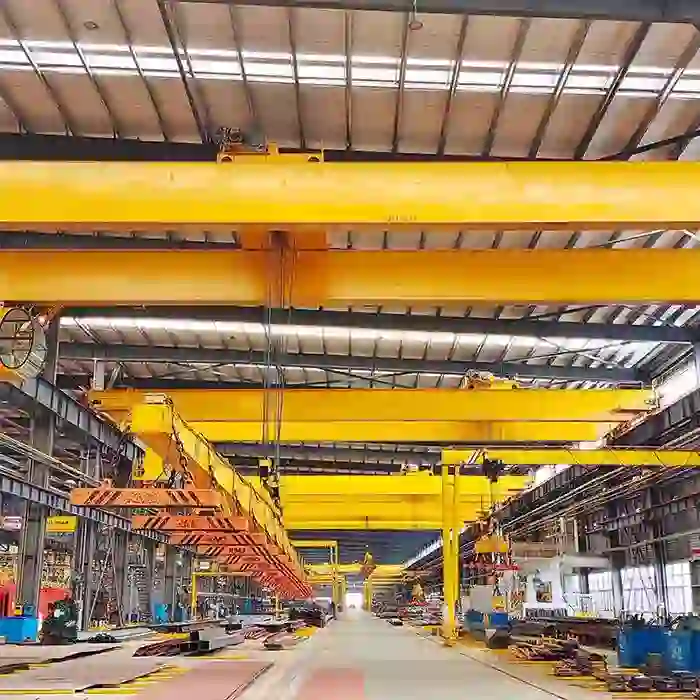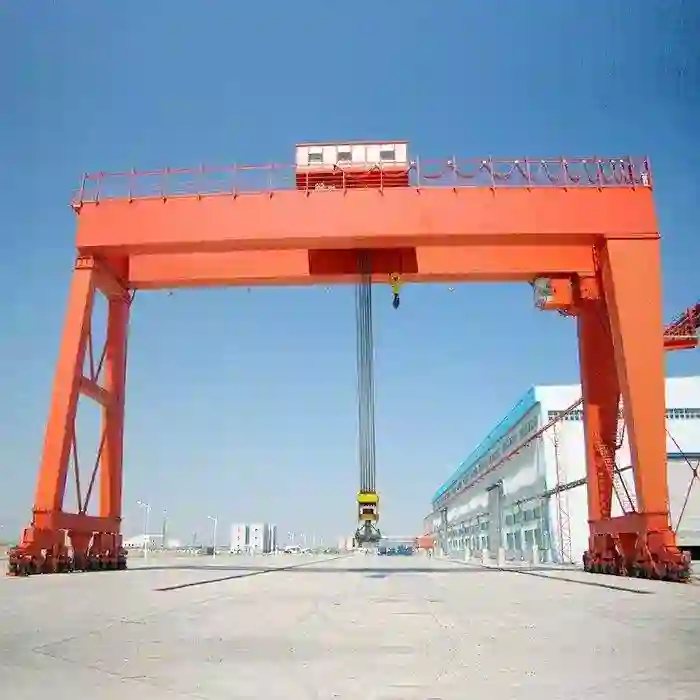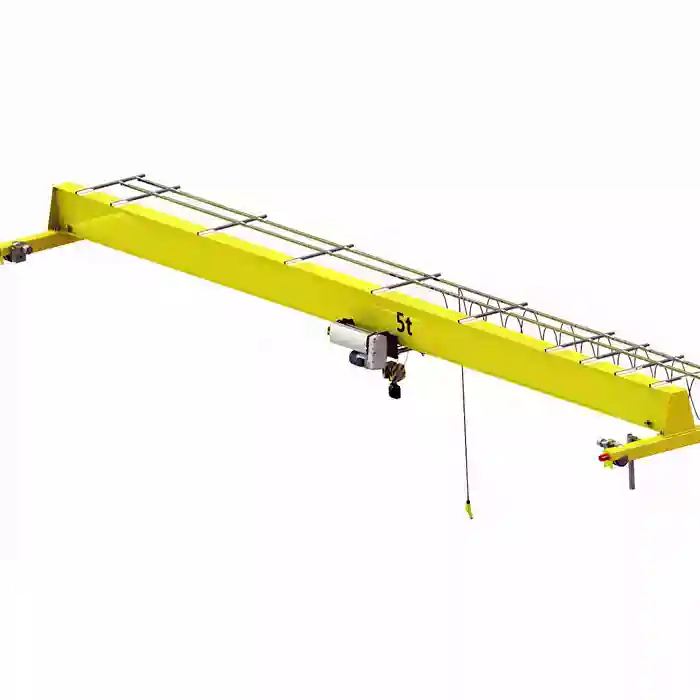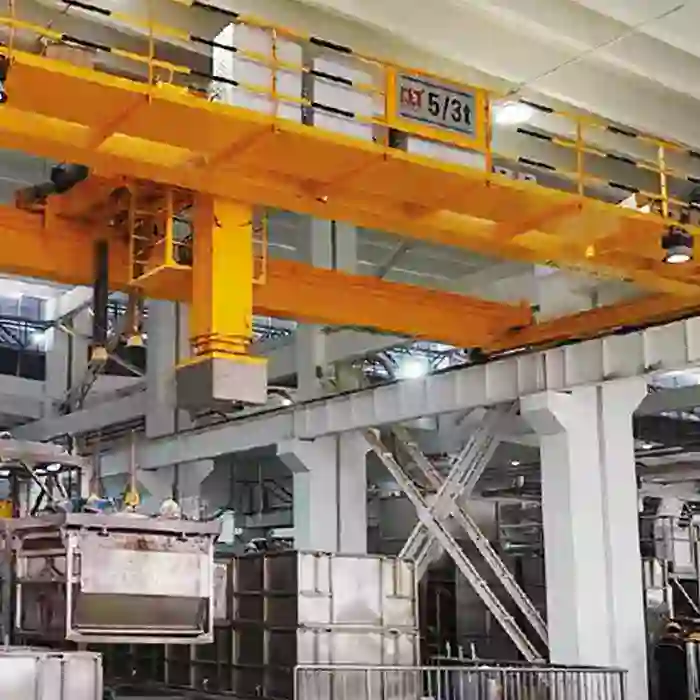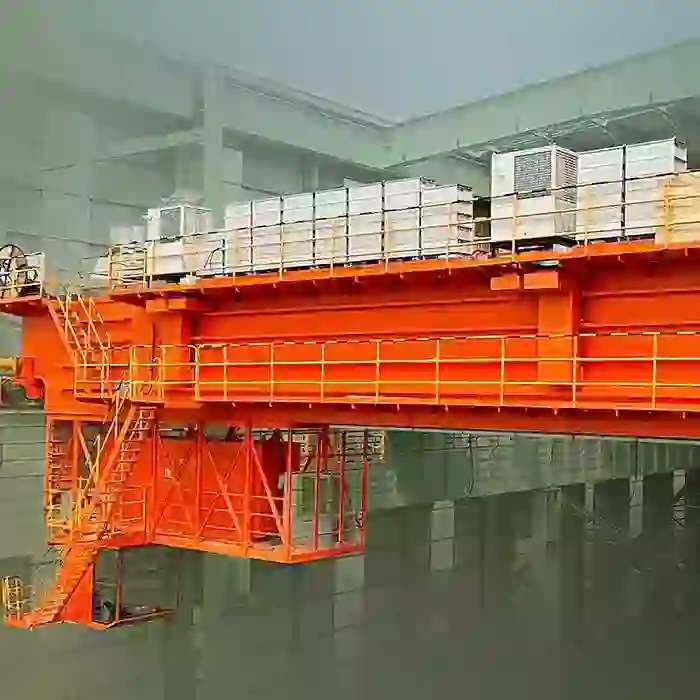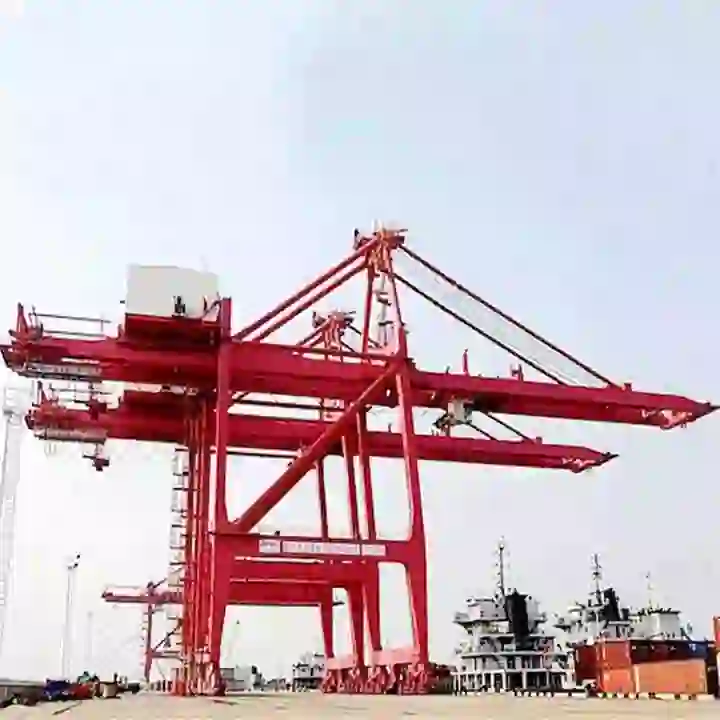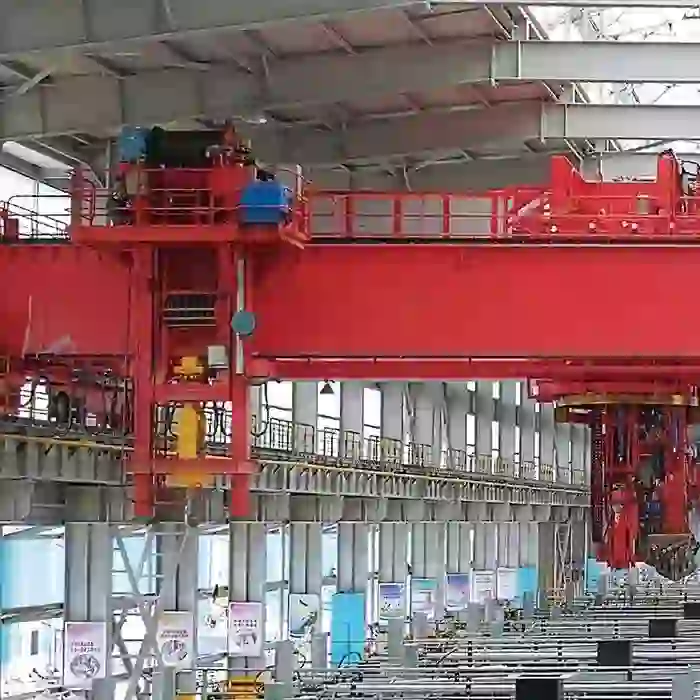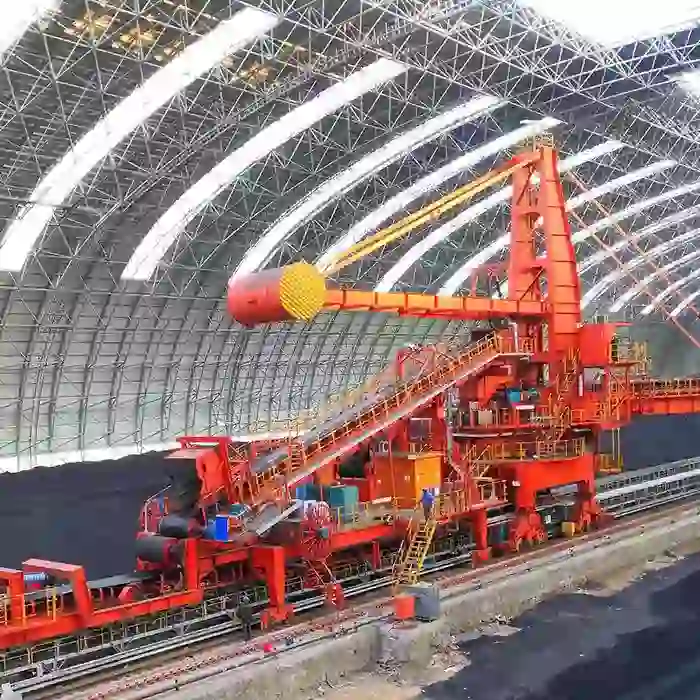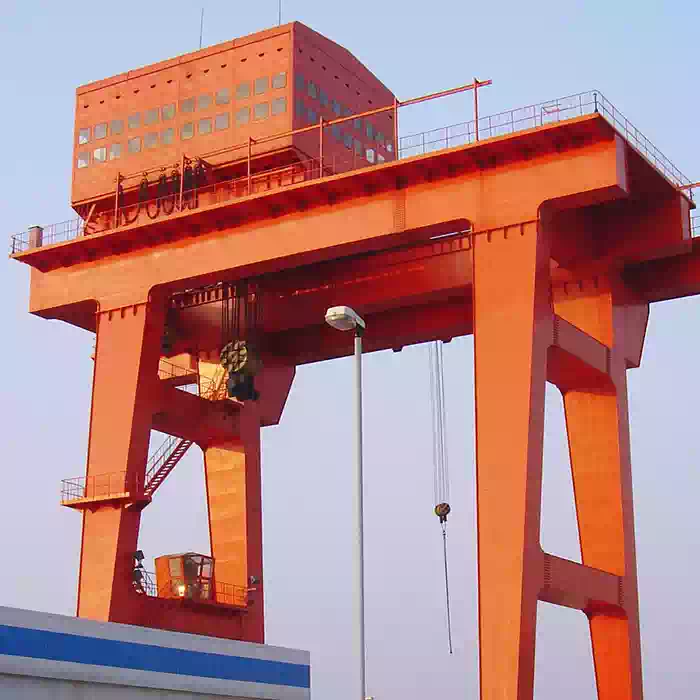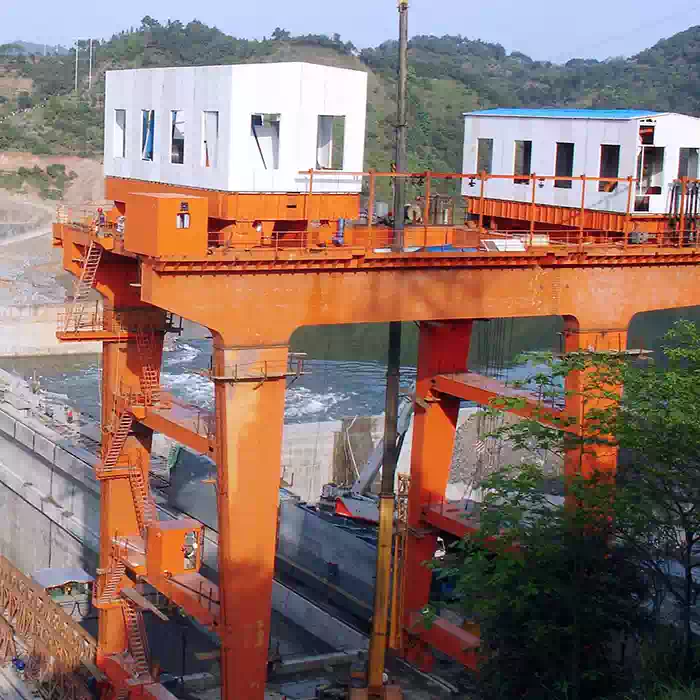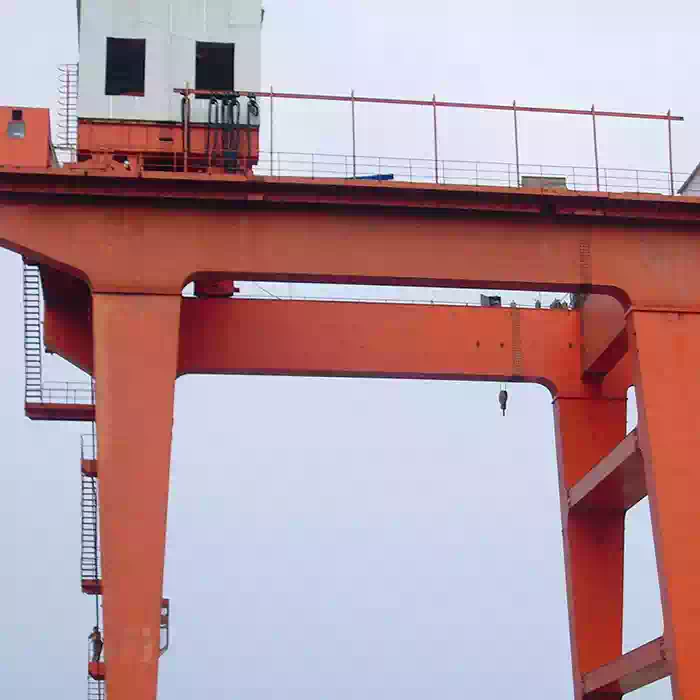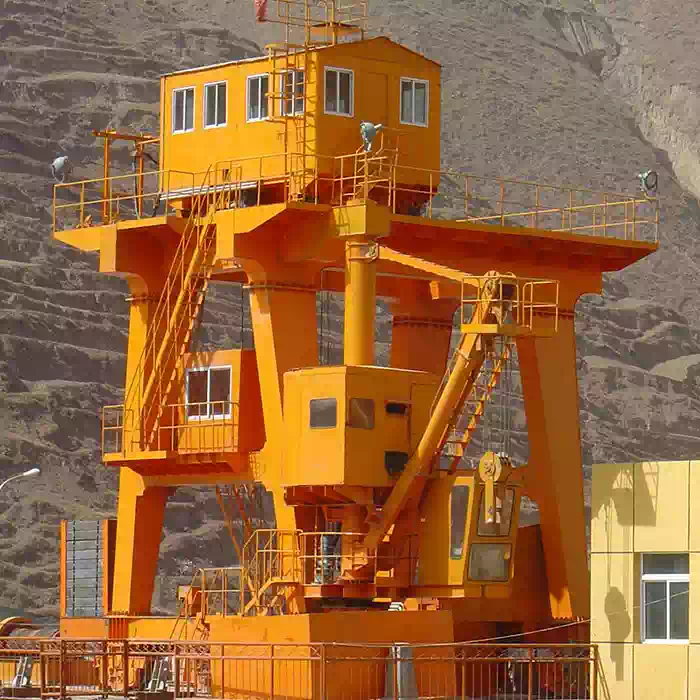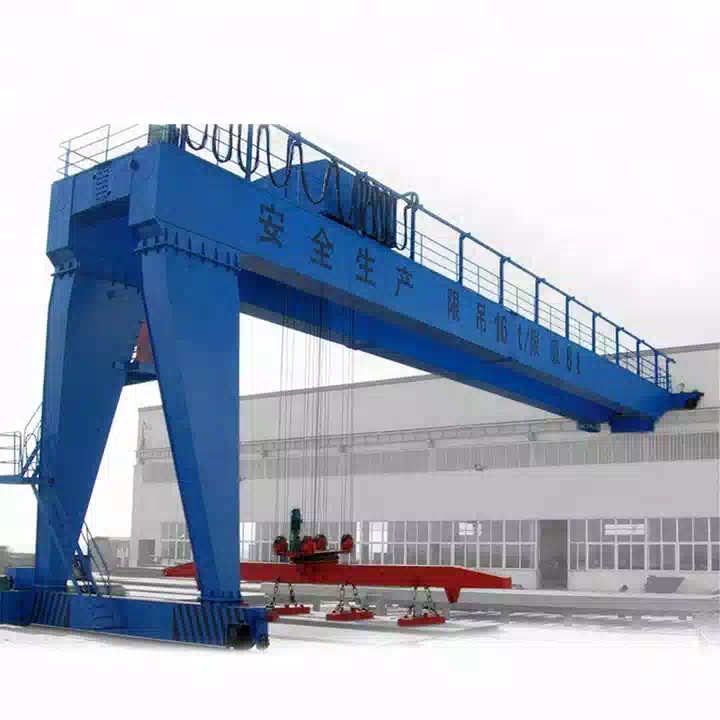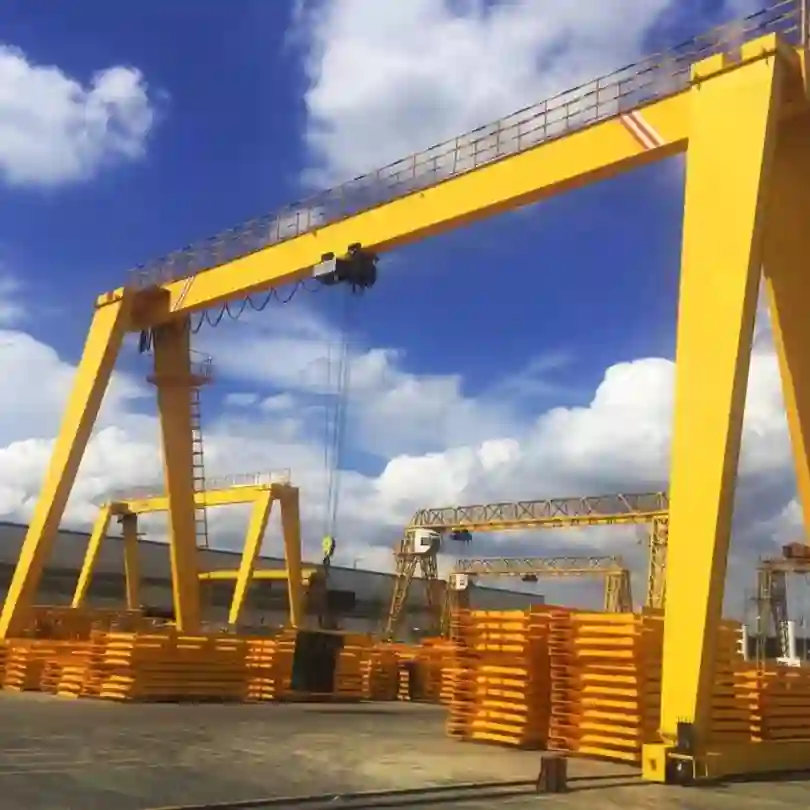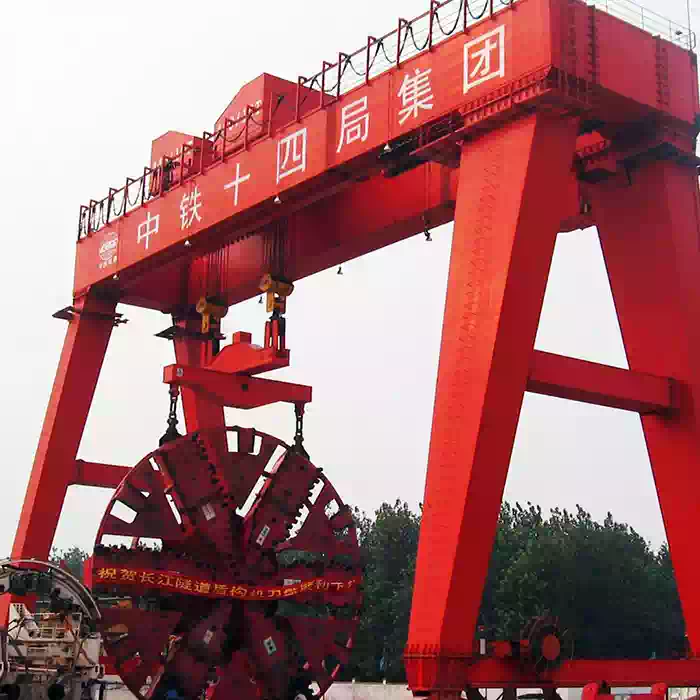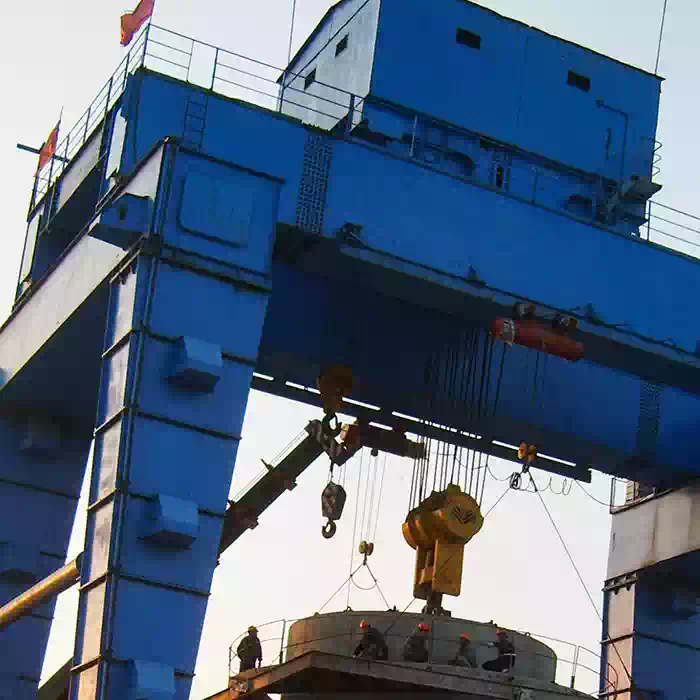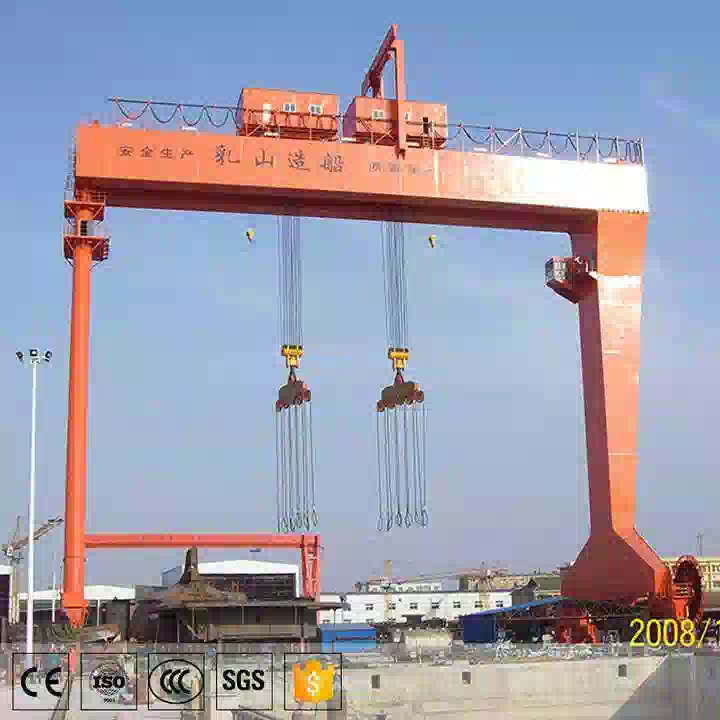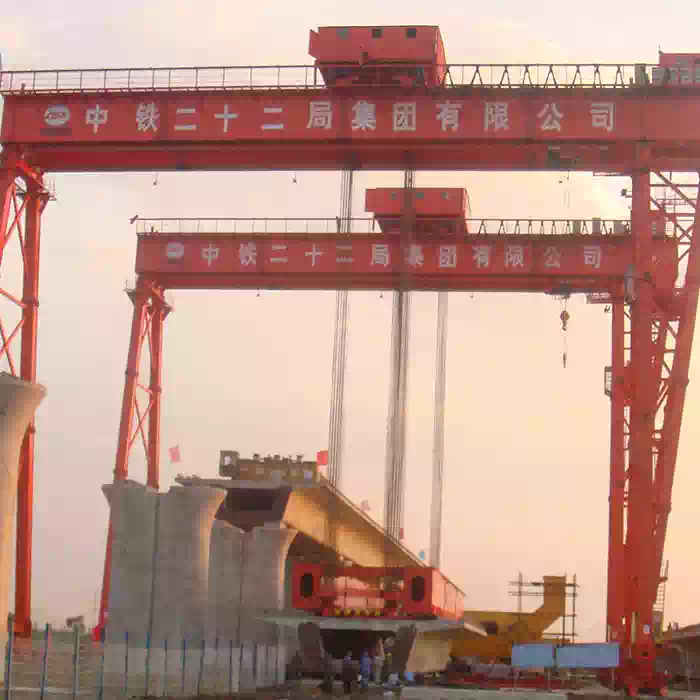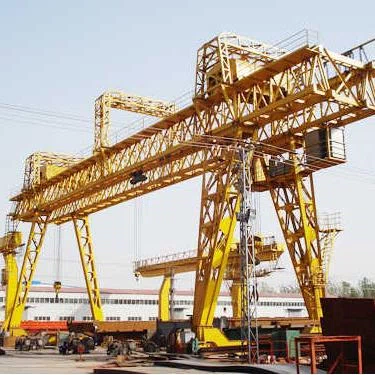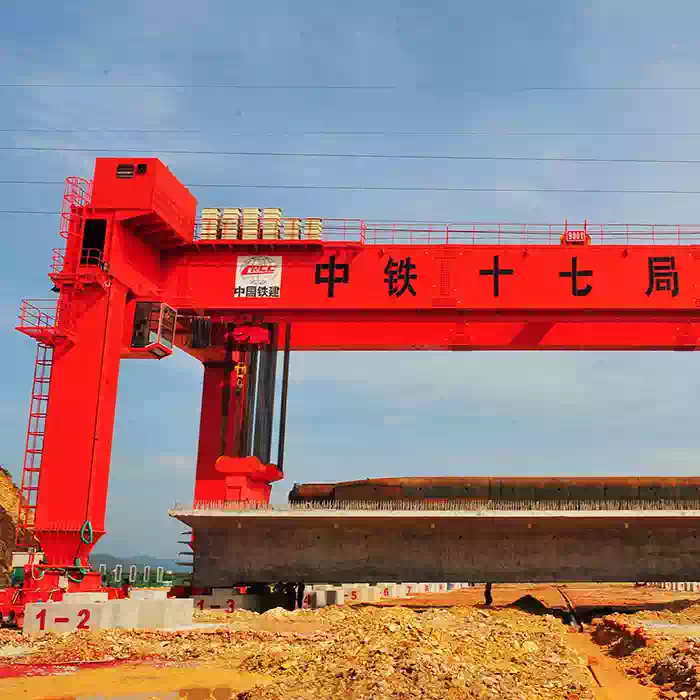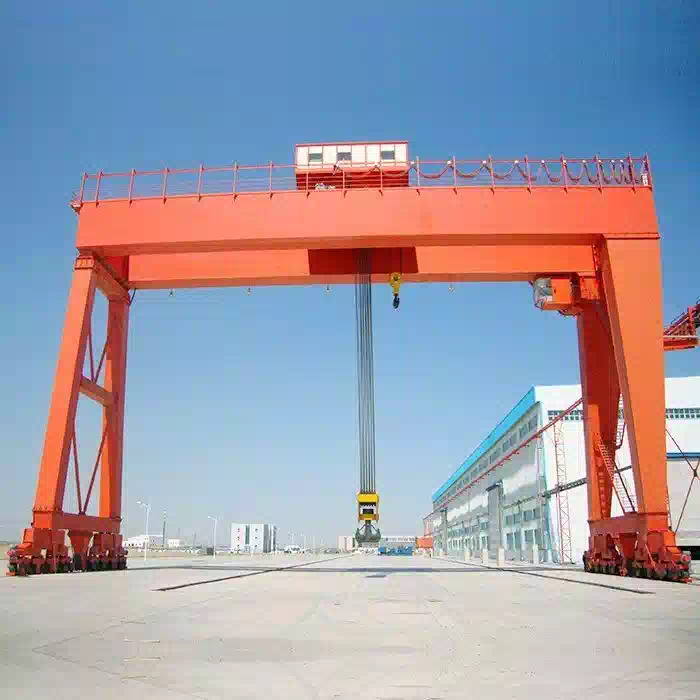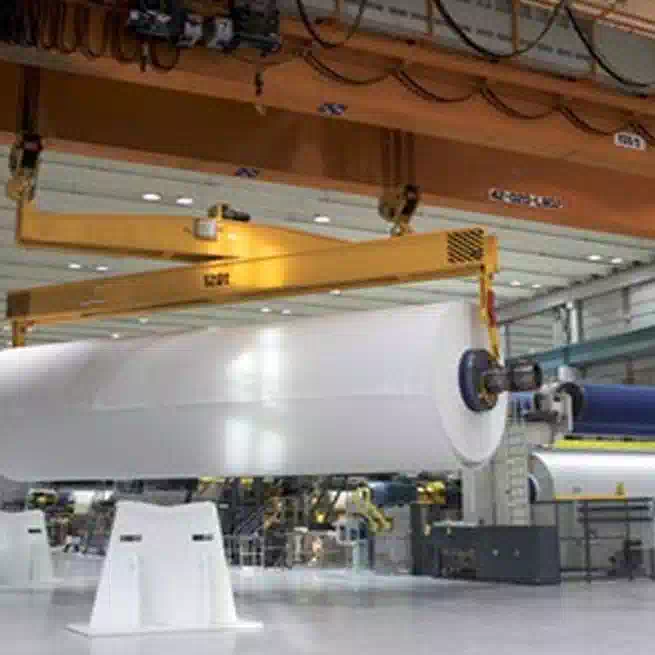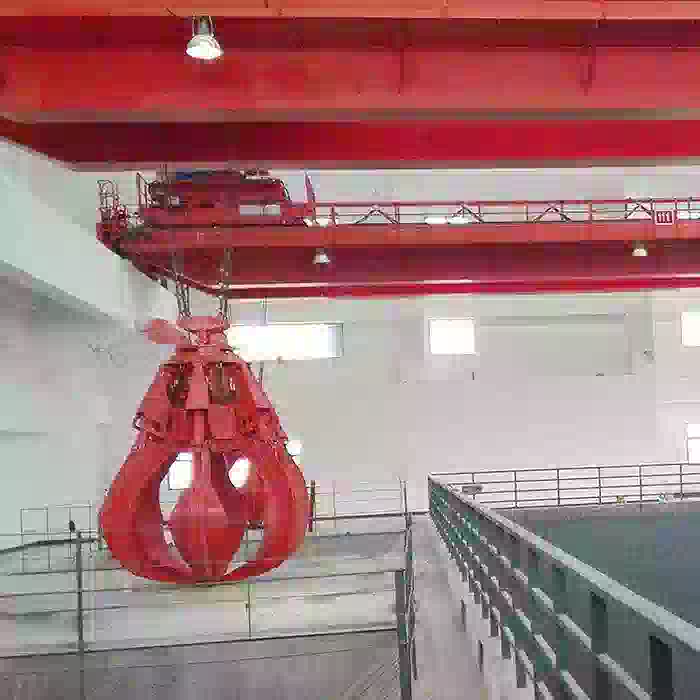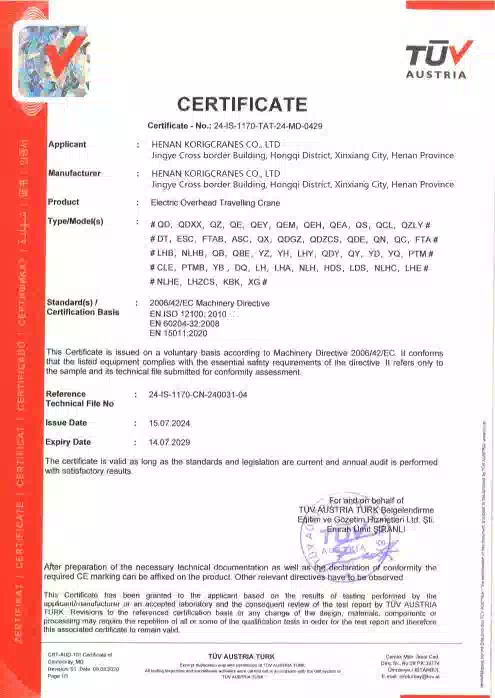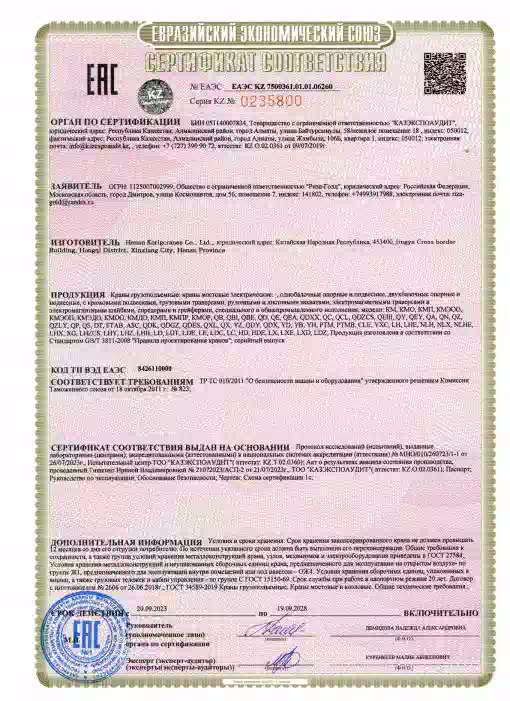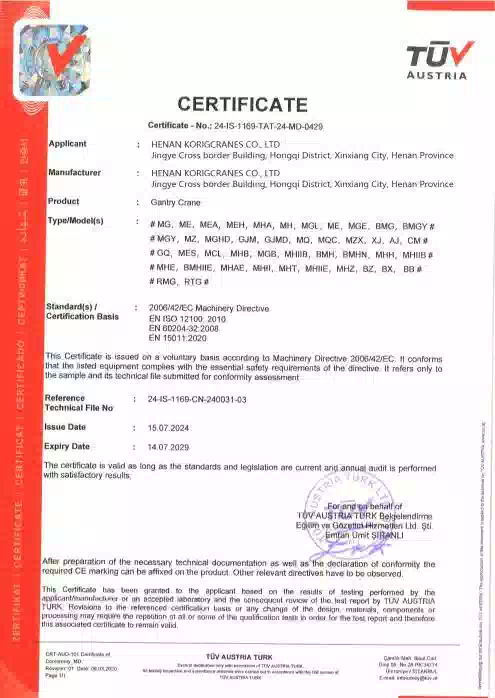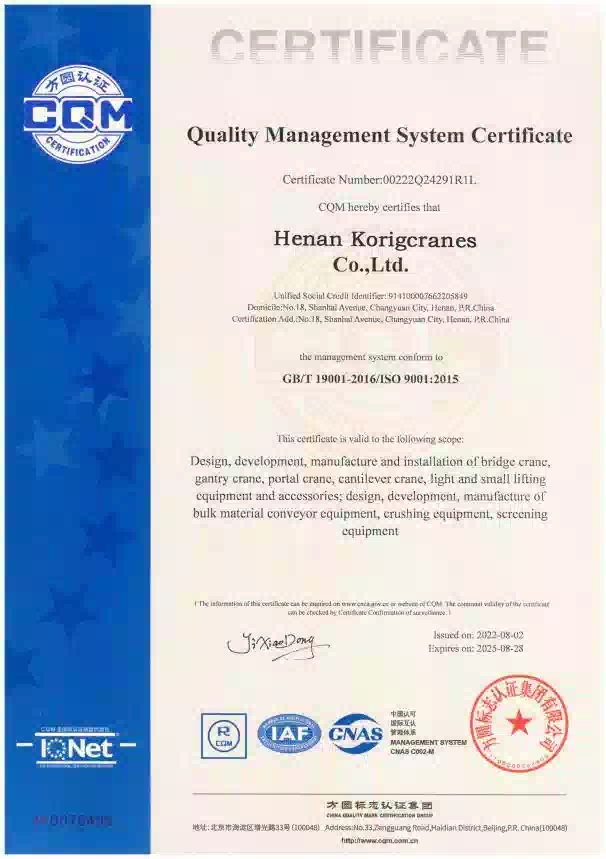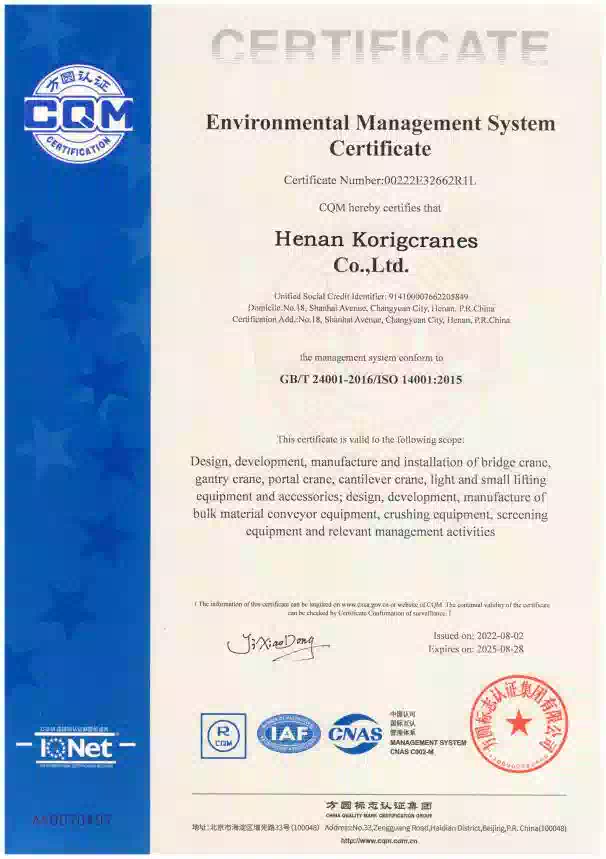
Dam top gantry crane
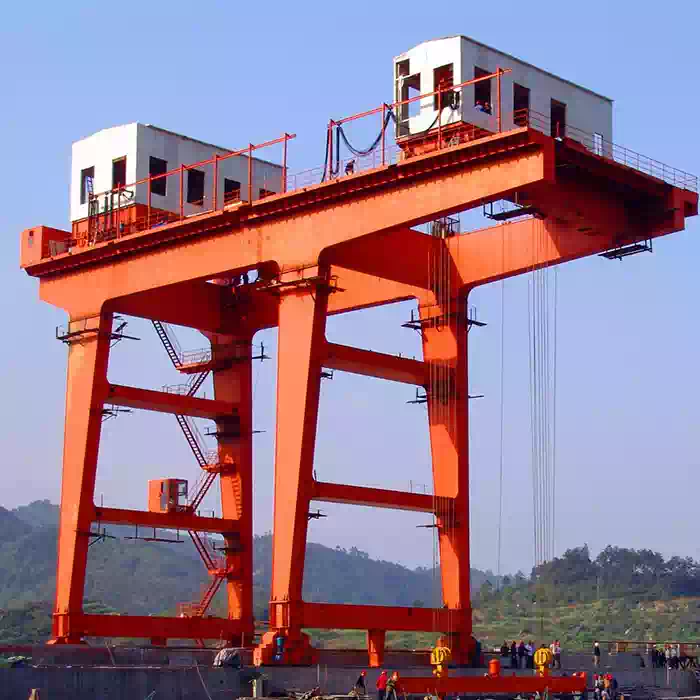



- 63t
- Q3
-

 Lifting hook
Lifting hook


- Product Overview
- Application Scenario
- Certificate
Dam top gantry crane can be divided into two kinds: unidirectional crane and bidirectional crane. The unidirectional hoist is fixed on the gantry frame. The Gantry runs along the track on the dam. And its service zone is a line, which can only be used to lift a gate of the same row, while the double direction gantry crane is with a trolley running perpendicular to the crane traveling. Thus, the double direction gantry crane can lift the floodgate or trash racks of different rows of upstream side and the downstream side.
There are two kinds of dam top gantry crane: 1. Single direction: The lifting mechanism (slings/hook) is fixed on trolley and only travel along the rails direction on main beams, thus it can only lift one side floodgate/trash rack. 2. Double directions: The lifting mechanism on trolley can move vertically against the main beam rails direction, thus it can be used to lift 2 sides’ floodgates/trash racks of upstream and downstream.
Features:
1. Steel plate or box-type girder, electric driving motor of lifting mechanism, gear reducing hoist;
2. The operating mechanism of the crane is driven by the motor, and the closed operating room is mounted on the frame;
3. Running buffer device and windproof rail clamp are equipped under the gantry leg;
4. The spreader moves up and down along the gate slot or around the hinge of the gate;
5. The opening and closing of the gate in the movable water is related to the size of the load and the water hydrodynamic pressure.








